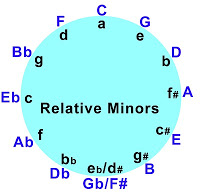We did a lot of work on Hornpipe which is sounding much better. We’re aiming for a rendition with crisp notes, played in the 3/2 march-like tempo – 1 & 2 & 3 &. Practice the difficult measures (23-25), shifting fingers when necessary. Focus on one section at a time until you can play it well, then move to the next section. Also practice the Eb scale and the Eb scale in thirds.
In the Hall of the Mountain King is also coming along. Again we’re looking for crisp notes for this piece in the key of Eb. Practicing the scale first can make it easier to play the piece.
We’re still struggling with Round 90 – please practice the notes this week so we can play it as a round. This is good practice for ensemble playing where you listen to yourself, listen to one another and watch/listen for the tempo. If you can play it well, move on to Round 91.
Review the Bb scale (both the scale and in thirds) before playing Theme from Abdelazer in Book 3, p. 28. If you have the recording, play the chords with a light, on-beat strum.
Shine on Harvest Moon and 4 Strong Winds are songs you can add to your “repertoire” if you like. We won’t be playing these in class.
Finally, practice those pentatonic scales. If you are planning to participate in the Blues workshop by Michael Gonzalez, these scales will help prepare you.
And, have a HAPPY and safe HALLOWEEN!
In the Hall of the Mountain King is also coming along. Again we’re looking for crisp notes for this piece in the key of Eb. Practicing the scale first can make it easier to play the piece.
We’re still struggling with Round 90 – please practice the notes this week so we can play it as a round. This is good practice for ensemble playing where you listen to yourself, listen to one another and watch/listen for the tempo. If you can play it well, move on to Round 91.
Review the Bb scale (both the scale and in thirds) before playing Theme from Abdelazer in Book 3, p. 28. If you have the recording, play the chords with a light, on-beat strum.
Shine on Harvest Moon and 4 Strong Winds are songs you can add to your “repertoire” if you like. We won’t be playing these in class.
Finally, practice those pentatonic scales. If you are planning to participate in the Blues workshop by Michael Gonzalez, these scales will help prepare you.
And, have a HAPPY and safe HALLOWEEN!


 RSS Feed
RSS Feed